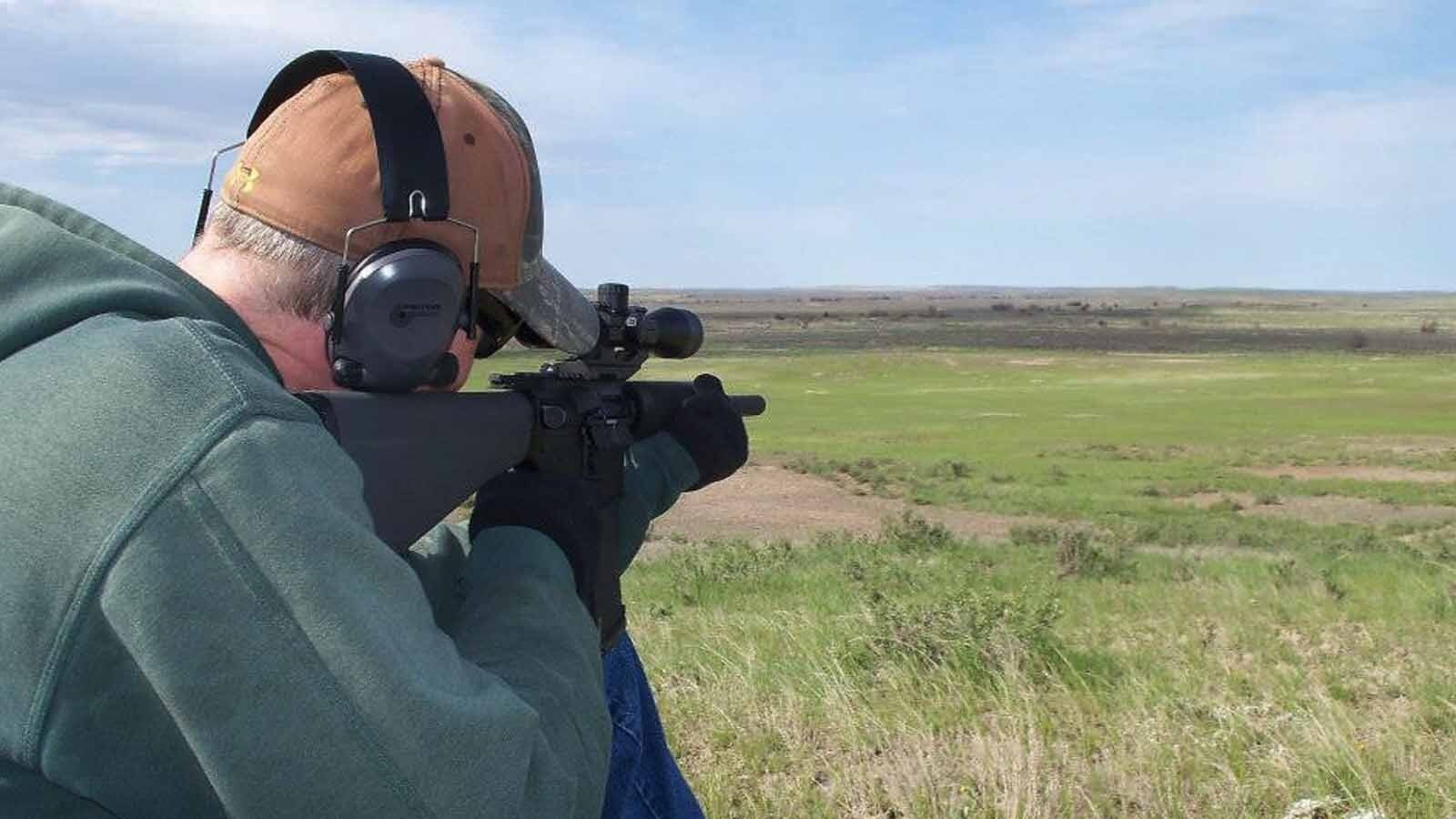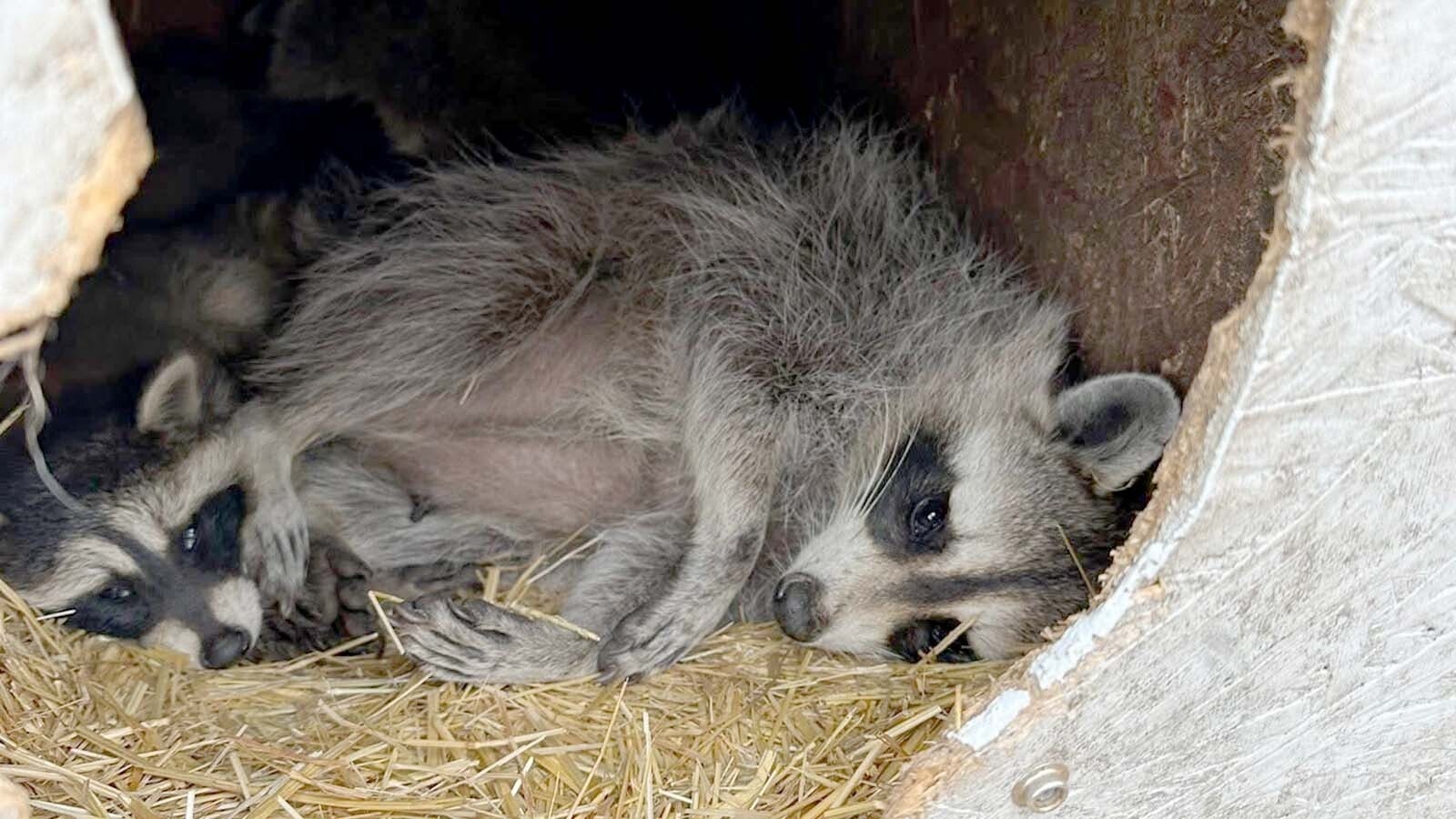When a couple hundred firefighters come rolling in all at once, there’s an indefinable energy to the air — even when those firefighters are near exhaustion.
Antelope Butte Mountain Recreation Area’s General Manager John DeVito had a ringside seat to that energy when it first came rolling into what’s called a Spike Camp, set up practically overnight at Antelope Butte about 12 miles west of the Elk Fire burning along the face of the Bighorns in northern Wyoming.
The spike camp is a spinoff from the main command center camp in Dayton, where most of the Elk Fire’s 900 firefighters have been stationed. This gives the crews better logistics to tackle the Burgess Junction area, where they are working to implement structure and infrastructure protection.
It also shortens response times considerably if something sudden and unexpected should happen on the southwestern side of the fire.
“When we start to have travel times of 45 minutes to an hour for a significant number of firefighters, we look at where can we put a spike camp,” Rocky Mountain Area Complex Incident Management Team’s Field Operations Chief Adam Zielger told Cowboy State Daily on Friday. “And there are three reasons we set up a spike camp, but a lot of it boils down to safety.”
Having a couple hundred firefighters driving an hour or two at night with deer, elk, moose and bears on the move, away from a fire that has consumed more than 87,000 acres so far, presents obvious hazards.
“The less people we can have driving back and forth two hours a day to camp, the safer we are,” Ziegler said. “It also increases our efficiency, versus having our firefighters driving two hours a day back and forth to camp, now they’re driving 10 to 15 minutes to and from.”
Better Rest, Better Firefighters
There’s also a big comfort factor involved for the firefighters.
Feeding a couple hundred firefighters in open tents at night in the dark in a makeshift camp in a field isn’t an effective strategy for serving the tired and hungry a nice, hot restorative meal.
A field also doesn’t offer a comfortable place for everyone to sit together, so they can have a little conversation while that meal is eaten.
“Now they have a place to sit, relax for a little bit, see each other, have some conversation,” Ziegler said. “And instead of having 100 vehicles driving back and forth for those two hours, burning fuel and burning the people’s time, now we have several vehicles to just run the supplies and food that they need.”
A field also offers only spotty cell phone service, which not only makes it hard for the spike camp crew to communicate important information to the command center, but also makes it hard for firefighters to keep in touch with family.
“With better service, we’re able to use Microsoft Teams to actually see the maps,” Ziegler said. “We can see what each other is looking at, versus trying to get all that in a cell phone conversation.”
All The Comforts Of Home
The Spike Camp brings together everything that the main camp has, just on a smaller scale.
There’s a yurt for logistics and operations command. There’s a medical facility, a fuel dispenser, shower units, hand-washing stations and climate-controlled sleep trailers, which will house 36 people.
“That has air conditioning and heat,” Ziegler said. “And it’s three bunks high on each side, the whole length of the trailer.”
Typically, those are used for the night shift to stay warm at night — though some are choosing their tents for the fresh air. It’s much less smoky on the western side of the fire than the eastern side.
DeVito was particularly impressed with just how quickly everything for the Spike Camp came together.
“They basically came in and set up a small town (overnight),” he said. “And they bring in all their own food, all their beverages, all their support stuff, all their materials, right down to cups, napkins, disposable stuff, toilet paper, you name it. I mean everything comes in with them.”
The community has been asking DeVito what the firefighters need, and the answer is not much.
“For the most part, the guy running the camp here has said, ‘You know, everywhere we go we run into that scenario, and people bring stuff, and anything that’s nonperishable is great. Anything perishable, typically, if we can’t use it, we give it back to the community.”
Here There and Everywhere
DeVito has made a point of being around at dinner time so he can greet the firefighters and thank them for their efforts.
“It’s pretty moving to have everybody rolling in,” he said. “I try to thank every single person when they come in. And they’re just exhausted, filthy and starving. I think they really get a kick out of being able to eat indoors now and being able to sit and talk for a little while before going back to tents and sleeping trailers and what not.”
DeVito enjoys talking to the firefighters.
“The two guys running this camp, they and their crew, are based in South Dakota, but they go everywhere,” DeVito said. “They’ve been in New Orleans, they’ve been in Oregon — they’ve been all over the West.”
Fire season, meanwhile, is almost year-round DeVito has learned.
“They kind of start in the eastern sections of the West as early as April, and then they’re running right through November. They’ve even pulled some attachments in January, February, March, you name it.”
The firefighters don’t spend a lot of time lingering after the meal.
“There’s a little bit of relaxing and joking around,” he said. “But then they’re heading right back to their tents to catch some sleep.”
Contact Renee Jean at renee@cowboystatedaily.com
Renée Jean can be reached at renee@cowboystatedaily.com.












